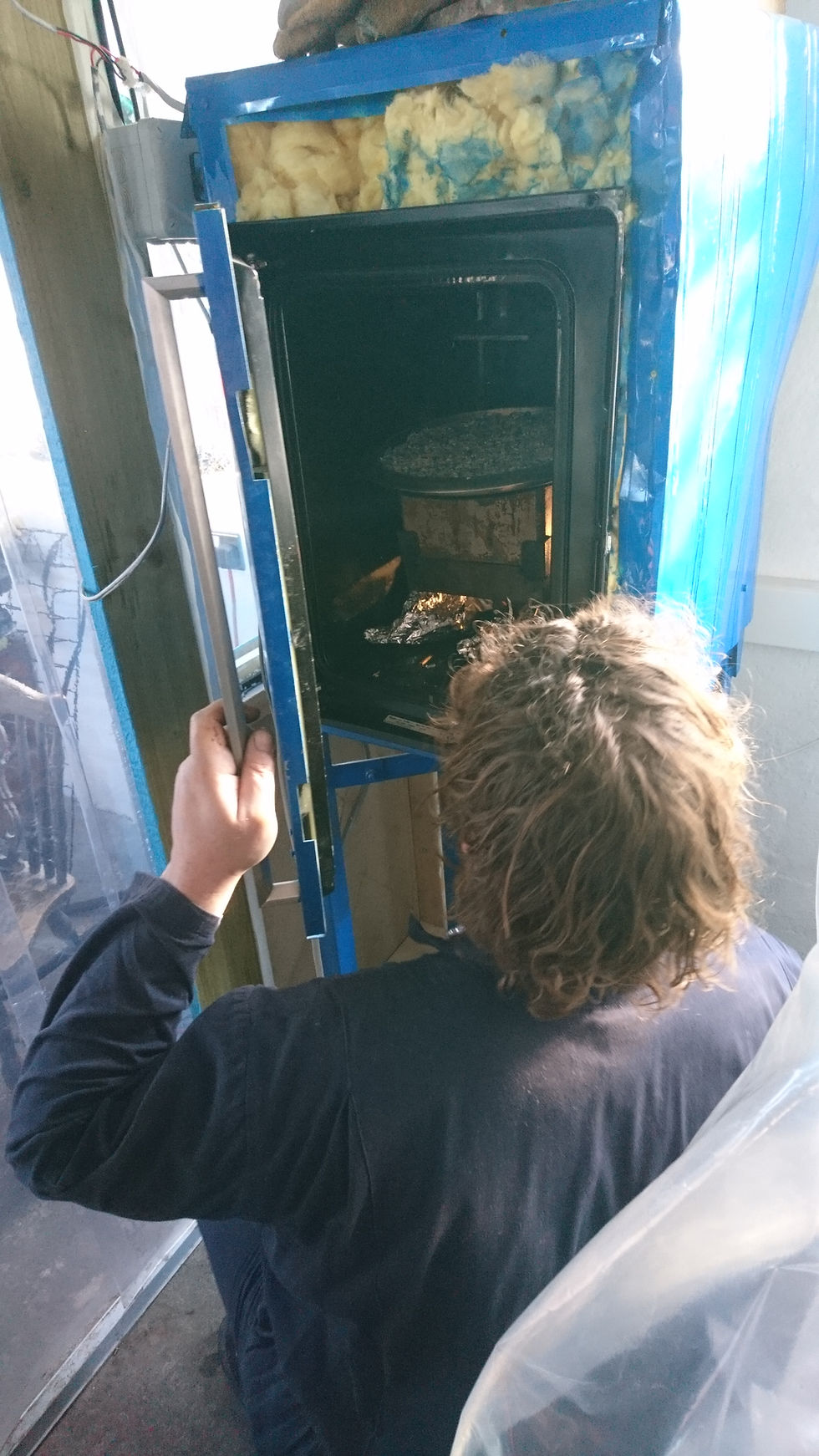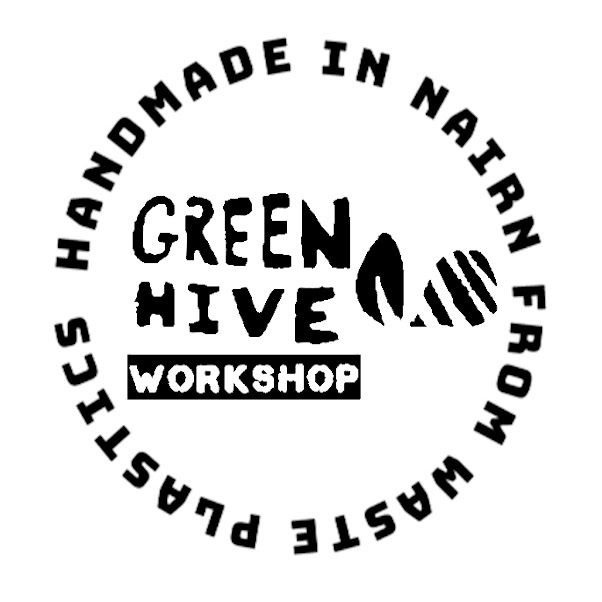Green Hive and Plastic@Bay, Durness
- Nov 1, 2019
- 5 min read
We had our second Green Hive team road trip on the 16th of October – all the way up to Durness to meet with Dr. Julien Moreau and Dr. Joan D’Arcy who are the founders of Plastic @ Bay – a community interest company aiming to tackle marine plastic pollution in north west Scotland and beyond – they turn marine pollution into unique, bespoke products at their Plastic Lab in Durness. Green Hive are launching a plastic recycling enterprise and reached out to Plastic @ Bay for advice and education on how to sustainably manage a workshop focused on recycling plastic household waste. Andy, Kirsty, Caroline and our volunteer Katrina set off on Wednesday and despite Caroline’s navigation skills we had a very scenic journey, with plenty of snacks!

Breathtaking views on the road to Durness. Photo credit – Katrina Woods
After a brief wander along the Sango Sands beach, we headed along to the Balnakiel Craft Village – a collection of diverse artists and craftspeople who have re-purposed an old military site into a creative hub on the north coast. If you ever do the North Coast 500 I highly recommend stopping by and checking out the artists as well as Cocoa Mountain (definitely the best hot chocolate in the Highlands)

The beach at Sango Sands Photo credit – Katrina Woods
We made our way over to meet with Julien and Joan at their Plastic Lab and after a brief introduction we headed down to Balnakiel Beach, where the Plastic @ Bay team collects the majority of plastic used in the lab.
Plastic @ Bay employ a ranger to collect waste from the beaches in proximity to Durness, but they also have volunteer beach clean days, as well as encouraging the local community to collect litter whenever they are on the beach. When Julien was describing the volume of waste collected from the beach, I couldn’t help but imagine a beach in crisis, like one of the polluted beaches in the Maldives or the Philippines. When we arrived at the beach however, it looked deceptively pristine; white sand, turquoise water and festoons of kelp along a freshwater burn.

Andy (right) gets the lay of the land from Julien (left) over looking Balnakiel beach
Julien has placed a blue bin specifically for plastic at the gates to Balnakiel beach to encourage people to collect and deposit marine waste – he collects waste from the bin regularly and sorts the waste based on it’s suspected origin.

The blue bin of Balnakiel and Julian’s electric quad
I didn’t expect to find much as the litter wasn’t easily visible – I’m used to spotting drinks bottles and cans and plastic bags but in Durness there is very little “litter” on the beach, instead the waste tends to be brought in on currents outwith the beach area, or even the country’s area! Once we had a masterclass tutorial on marine waste spotting from Julian, we started rooting through the kelp strands and loose sand beds – then the problem became clear – the larger pieces started to become visible, but the scale of micro-plastic pollution was really shocking. Sprinkled through the wet sand at the tide line were little flecks of luminous orange, green, purple – almost like glitter. This is accumulating micro-plastics and it is very difficult to clear from the beach. Julien explained that because the shape of the sand changes often in Balnakiel bay, a lot of the pollution ends up buried over after a couple of tides – only to re-emerge later down the line.

Katrina finds a parachute hidden in the kelp.

We were waste-busting for 30 minutes and we were able to collect 7.5kg of pollution!

Julien shows us how to categorise what we found on the beach
Collection and categorising
After collecting our waste we headed back to the plastic lab where Joan and Julien helped us to seperate the waste out – we were looking to find recyclable and non-recyclable waste first – and then trying to figure out where it originated from. Joan conducts research into the origin of the pollution collected in Balnakiel bay, she is like a waste detective and through their partnerships in Durness, Joan and Julien have been able to map the plastic distribution through the local coastal currents which gives them an insight into how the pollution ends up in the bay and what drives particular spikes in pollution.

Unidentifiable plastics found on the beach.

Nylon fishing rope, buoy fragments and fishing line

A marine tag!

Each container holds a different kind of plastic pollution

Julien demonstrates waste distribution after a storm
Categorising and investigation
After a very interesting and informative look into the pollution distribution and possible origins, we were ready to start crafting! Julien has a wide range of tools and machines to help him in his crafting – injection moulds, pressure ovens, industrial shredders – and explained what each tool was for and how he created his method of production.
Each item that Julien produces is unique and hard wearing – one of the North Coasters has a 1000 year guarantee as a coaster, or a tile – and if you want something different, Julien can remould it for you! Every item produced has multiple uses and a long shelf life, and the range of colours and patterns that Julien creates with his products is fascinating – he can take plastic pollution and turn it into marbled items which look like precious gemstones.

Some of Plastic @ Bay’s North Coasters – you can see more here: https://www.plasticatbay.org/2019/10/11/check-out-our-new-hexagonal-tiles/
As this is an exploratory enterprise, there is no “industry standard” way to approach production and Julien was able to provide Andy with lots of useful information to help us once we start recycling plastic in our workshop.

As an end to day one, we cleaned and shredded our HDPE plastic in preparation for creating a long lasting unique item the next day.
The next morning we were raring to jump in and start creating – Julien met us at the lab and took us through his production process – we wanted to create a plastic clock with our HDPE to hang proudly in the workshop at Green Hive workshop.

Milk bottles and bottle caps ready to start their new life

1000 year best before date on this cake in the oven
Whilst we were waiting for our clock to form, Julien took us over his method for creating moulded items, such as tiles and letters – and with much trial and error we were able to produce some beautiful letters for a sign, made from the nylon rope collected the day before!

We all had a shot at crafting letters and the end results are just fantastic – these will be mounted on some live edge wood and used as a sign.
After all that crafting, it was time to check on the clock! Julien uses a combination of pressure and oven heat to create his marbled patterns.




We are over the moon with how the clock and the lettering came out, and after a debrief and lots of hugs, we started back down the road – I personally feel much more informed and confident about pollution, especially marine pollution and also our enterprise project, and that is all thanks to Julien and Joan’s invaluable tuition.

From left to right; Andy with a plastic guide, Dr Joan D’Archy – Plastic @ Bay, Kirsty with the clock, Katrina and Caroline with letters and Dr Julien Moreau – Plastic @ Bay
Let us know what you think of our roadtrip – are you as surprised as we were about the waste problem? Have you been up to the craft village before? If you have any questions about Plastic @ Bay, or the work they do – check out the website here and if you want to know what Green Hive are up to at the plastics workshop, or to admire our finely crafted pieces in Balmakeith – pop along on a Thursday between 11am – 5pm to have a chat with Andy.




Comments